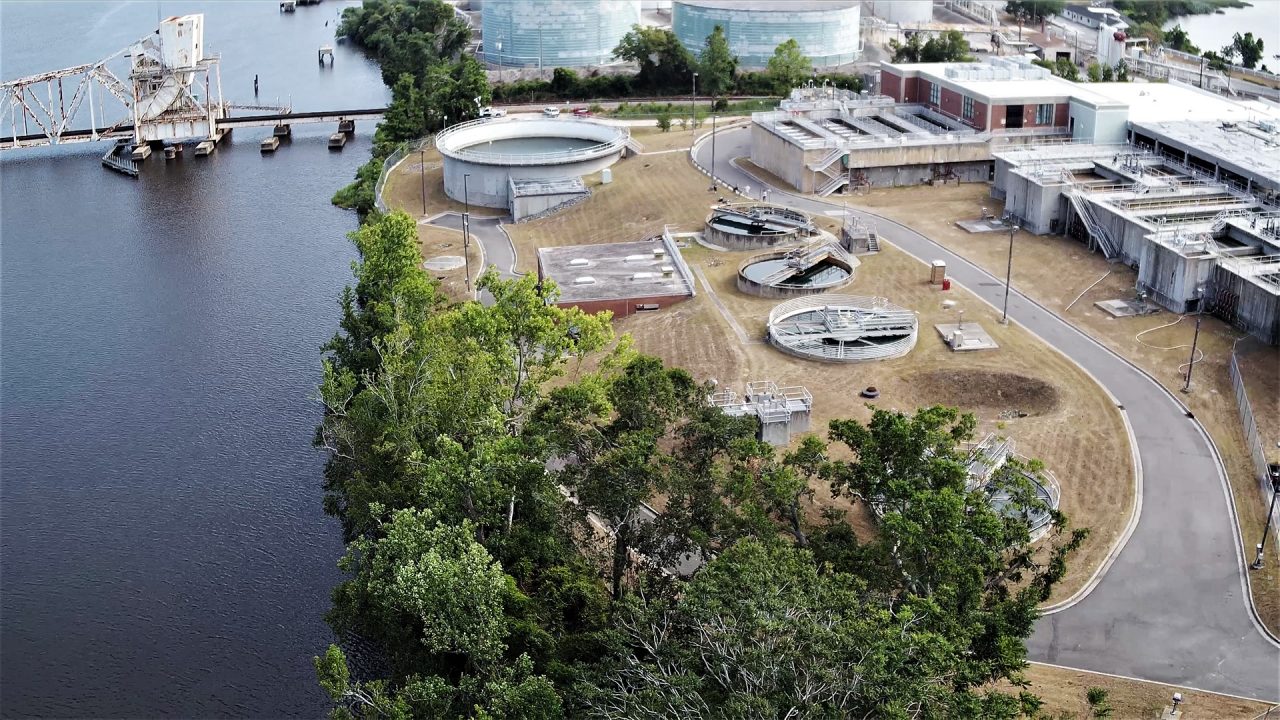
North Carolinians from cities, towns and communities throughout the Cape Fear River Basin urged the U.S. Environmental Protection Agency to uphold its objection to a municipal wastewater treatment plant’s proposed permit that excludes an effluent discharge limit for 1,4-dioxane into their drinking water sources.
One after another, speakers at a public hearing the EPA hosted last Wednesday night asked the agency to force the state to reissue a permit that will limit discharges of the likely human carcinogen into surface waters that flow into tributaries of the Haw and Deep rivers, which converge to form the Cape Fear River.
Supporter Spotlight
Residents from Wilmington northwest to Fayetteville, Sanford, Pittsboro, Siler City, and Asheboro joined representatives of environmental organizations and downstream public water utilities at the hearing at Randolph Community College in Asheboro, the very city that fought to get 1,4-dioxane limits removed from its permit.
“Frankly I’m embarrassed that Asheboro is polluting the drinking water of as many as 900,000 people who live downstream from us,” longtime Asheboro resident Susie Scott said. “The solution, to me, seems simple. Our city should hold the companies producing this pollution to account and insist that they clean up their waste before we accept it into our treatment plant. People living downstream from us deserve safe drinking water.”
In August 2023, the North Carolina Department of Environmental Quality’s Division of Water Resources issued Asheboro a National Pollutant Discharge Elimination System, or NPDES, permit limiting the city water treatment plant’s release of 1,4-dioxane.
The city sued, challenging the state’s power to include a water quality standard for the clear, odorless chemical solvent used in manufacturing processes.
In September 2024, the Chief Administrative Law Judge for North Carolina at the time, Donald van der Vaart, ruled in the city’s favor and revoked permit limits of 1,4-dioxane.
Supporter Spotlight
In his ruling, van der Vaart said that DEQ officials did not follow the letter of the law written in state statutes when they calculated discharge limits and established an enforceable water quality standard for 1,4-dixoane. He also noted anticipated high costs associated with monitoring and treatment of the chemical compound.
DEQ’s appeal of that ruling is pending in Wake County Superior Court.
Costs to treat 1,4-dioxane will fall on the backs of downstream water utilities customers if the pollutant is not controlled at the source, Cape Fear Public Utility Authority Executive Director Kenneth Waldroup said.
“The presence of 1,4-dioxane in our source water is just the latest example of how gaps in regulation can lead downstream communities exposed to risk,” he said. “1,4-dioxane is a synthetic, highly mobile compound that resists natural degradation and conventional water treatment. Once it enters our watershed, it is persistent and travels far downstream, all the way to our drinking water intakes. Removing 1,4-dioxane from our drinking water requires advanced and very costly treatment technologies. We’re talking millions of dollars in systems and additional millions in operations costs over a period of time.”
Waldroup said DEQ “took appropriate action” when it included 1,4-dioxane limits in Asheboro’s NPDES permit, but that the state Office of Administrative Hearings “inappropriately and inaccurately invalidated that move.”
“EPA is obligated to assume permitting authority if the state fails to comply with federal permits, and EPA must require the state of North Carolina to address this pollutant and protect 900,000 downstream users,” he said.
Public water utilities, including CFPUA, and businesses downstream of Asheboro’s wastewater treatment plant were notified by DEQ last January that the plant had discharged substantially high concentrations of 1,4-dioxane into Hasketts Creek, which empties into the Deep River.
Misty Manning, Fayetteville Public Works Commission’s chief operations officer for water resources, recalled to EPA officials last week of the Jan. 24 sampling results reported by the state and Asheboro.
“Asheboro’s own sampling result from that day was 3,520 parts per billion. This is more than 10 times higher than EPA’s calculation of what Asheboro’s discharge should be to protect public health at 22 parts per billion. Without enforceable limits, the city of Asheboro’s pretreatment program has yet to be successful in limiting 1,4-dioxane discharges to levels that meet water quality goals for a pollutant with a reasonable potential to cause or contribute to an excursion above state water quality standards,” Manning said.
She was one of several speakers at the hearing to point out that other municipalities in the state have successfully reduced 1,4-dioxane discharges through industrial pretreatment processes without bearing economic hardship.
“And Asheboro has the responsibility to do likewise, using its permitted authority over their local industrial users,” Manning said. “Downstream communities should not bear the financial burden of treating and removing pollutants introduced by unchecked upstream discharges.”
Last June, the Southern Environmental Law Center filed a lawsuit on behalf of Cape Fear River Watch and Haw River Assembly against Asheboro and the city’s industrial customer StarPet Inc., to stop their discharges of 1,4-dioxane into the Cape Fear River basin.
“As part of its antiregulatory fight, Asheboro has raised the absurd argument that it should not be the one that has to pay to control the cancer-causing pollution that it dumps upstream of drinking water supplies,” SELC attorney Hannah Nelson said. “I want to be clear. Asheboro could stop this pollution today by requiring its industries to treat for 1,4-dioxane, but it has chosen not to. In making that choice, Asheboro forces us, the families, the drinking water utilities, the local businesses, the schools, all of those who live downstream of the city, choose us to have to pay for their pollution.”
Stephen Bell, an attorney with Cranfill Sumer law firm’s Wilmington office and outside counsel for Asheboro, said that the city he represents believes steps DEQ took in implementing the August 2023 permit “set dangerous precedent with far-reaching implications.”
“Asheboro is not asking for no water regulation. They’re asking for regulation in accordance with the state law. As it stands today, based upon the court’s ruling, there is no water quality standard for 1,4-dioxane. The courts, our environmental rulemaking agency, they’re currently addressing this issue of limits for 1,4-dioxane and the EPA should respect that state-level process,” he said.
Once everyone at the hearing who signed up to speak addressed EPA officials, a member of the audience asked when the agency expects to make a final determination on the permit. The EPA may reaffirm its objection to the permit, require that the state modify the permit, or withdraw its objection of the permit.
Paul Schwartz, associate regional counsel in the Water Law Office at EPA’s Atlanta region office, said there is no statutory or regulatory timeline in which the agency must decide.
“In terms of specifying a date, certain that it would be done by, I don’t think we can do that,” he said. “And it doesn’t make it any easier that we’re operating during a period of government shutdown. But I think we want to give it immediate attention and focus on it so it doesn’t drag on too long.”
If the EPA decides to reaffirm its objection or require the permit to be modified, DEQ will have 30 days to submit a revised draft permit to the agency. If DEQ does not do that, the EPA will become the permitting authority.
The EPA is accepting public comments through Oct. 31 via email to R4NPDESComments@epa.gov or by mail to US EPA, NPDES Permitting Section, Water Division, 61 Forsyth Street, SW, Atlanta, GA 30303-8960.







